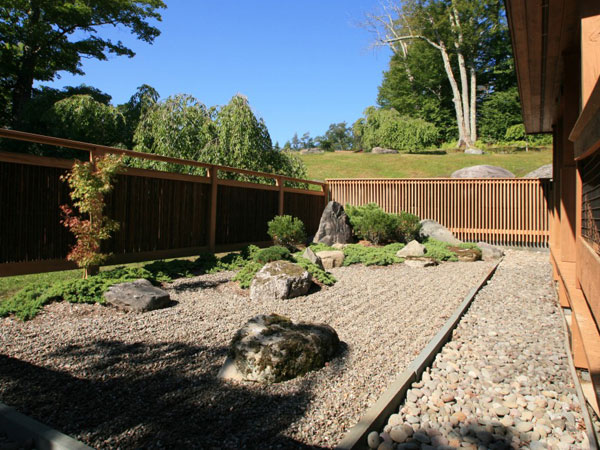Utsuroi: changing space
Utsuroi, another Japanese spatial concept that causes the self/space boundary to blur, is present throughout Japanese architecture and gardens. Utsuroi means gradual and inevitable change from one state to another. It can also refer to reflection or projection of one thing onto another. Both meanings suggest that nothing is reliable, and everything is ephemeral.
Japanese spaces are made to appreciate these changes. Utsuroi is often used to describe landscapes and symbolize changing seasons. It also describes the moment in which the peak of an event is passing. For example, if Utsuroi is used to describe cherry blossoms, it means that the flower’s petals have just started to fall.
Reflections and silhouettes at Phoenix Hall
An example of where Utsuroi exists in Japanese architecture is Phoenix Hall at Byodo-in in Kyoto. Phoenix Hall is at the final stage of Japanization of the Chinese temple complex. Traditionally, solid walls and structures surround the campus’s important buildings. But over the years of Japanization, Phoenix Hall, pictured below, flattened into a more linear building.
In a way, Phoenix Hall is a reflection of the original Chinese temple campus. There is now a large stretch of water in front of the building, creating a silhouette. What we now see is two different silhouettes: one of a past three-dimensional object, and one of the physical building above ground. We do not know which one is real—nothing is reliable.

Utsuroi in Japanese gardens and interiors
Utsuroi is also an important concept in Japanese garden design. Dry (or “Zen”) gardens use pebbles and sand to represent water, encouraging you to imagine movement. The oldest Japanese landscape book, written in the 11th century and discussed in the video above, suggests to design a garden that appreciates both the changing seasons and time of day.
Utsuroi also occurs in interior spaces by incorporating different temporal elements. In the photo below of a Machiya townhouse’s summer setting, you can see how transparent or partially transparent elements are present. Screens now replace opaque sliding doors.

Consider how reflections, changing landscapes, and temporal elements affect your experience of a space. When changes in the spaces around us are inevitable, do we also inevitably begin to feel more mindful?
This article is based on Yoko Kawai’s talk, “Designing Mindfulness: Spatial Concepts in Traditional Japanese Architecture,” at the Japan Society in New York in May, 2018.


